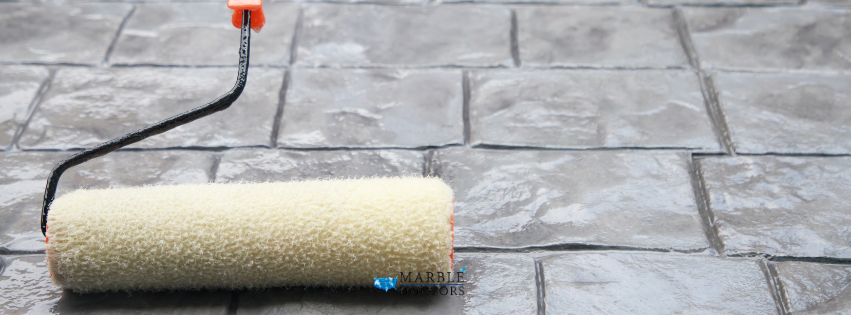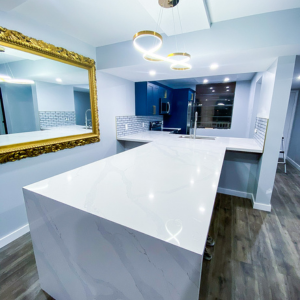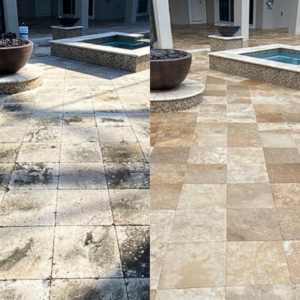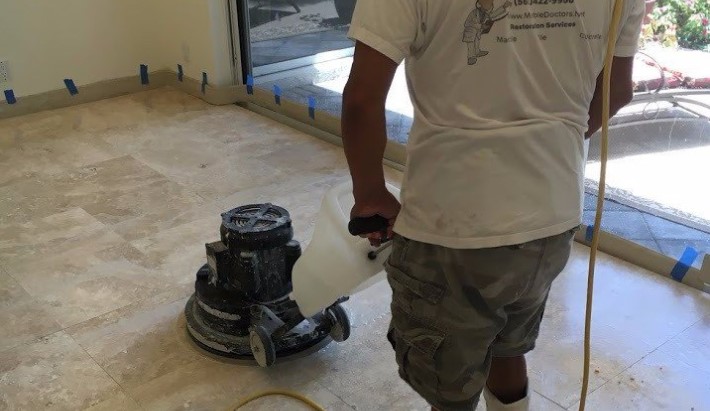
1. Why is it so important to protect natural stone?
Impregnator sealer plays a crucial role in ensuring the long-lasting durability of a natural stone installation. Due to their inherent porosity, natural stones are susceptible to staining and degradation over time. To mitigate these risks, applying the right sealer becomes imperative.
Even something as seemingly innocuous as routine cleaning with tap water, which typically contains salts, minerals, and chlorine, can prove harmful to natural stone surfaces. Additionally, spills of substances like oil, food, and beverages have the potential to permeate the stone and cause discoloration.
2. What is the purpose of impregnating / penetrating sealer?
Impregnator or penetrating sealers are specifically engineered to permeate beneath the surface of the stone and accomplish one of two things:
- Deposit solid particles within the stone’s pores;
- Create a protective coating on the minerals situated below the surface.
These penetrating sealers function by preventing the infiltration of water, oil, and dirt into the stone or tile. When properly applied, a high-quality impregnator sealer will not alter the texture or appearance of the stone.
It is imperative to use an impregnator for all polished and smooth surfaces since surface coat sealers will not adhere properly and can be easily worn away.
3. What does sealing or impregnating stone really mean?
In the stone industry, there is often a mix-up between the concepts of sealing and impregnating.
The primary goal of using an impregnator is to shield the interior of natural stone from staining. Impregnators achieve this by preventing substances from infiltrating the stone’s inner layers, effectively averting interior staining.
However, they do not provide protection for the stone’s outermost surface. On the other hand, sealers function as a surface-level defense, offering superior resistance against stains. However, they come with the trade-off of altering the stone’s appearance by adding a glossy finish and darkening the color tone.
Maintaining the effectiveness of sealers typically requires more frequent stripping and reapplication.
4. Does an impregnator sealer provide stain proof to the stone?
Mostly, manufacturers engineer penetrating sealers to offer resistance to either water or oil, but they are not completely impervious to these substances.
Allowing a liquid to persist on the stone for an extended period can ultimately lead to penetration and staining.
The primary purpose of penetrating sealers is to offer a protective window of time, allowing for spill cleanup before staining occurs.
Emphasizing that these sealers do not intend to prevent acid etching caused by acidic foods and drinks like lemon, vinegar, and tomatoes is crucial.
Whether sealed or unsealed, acidic substances can induce surface etching on materials like marble, travertine, and limestone.
5. Does an impregnator sealer prevent oil penetration?
Most sealers will prevent water and oil penetration, but it is very difficult to stop hot cooking oil from penetrating into the stone, because it can melt the resin in the stone.
6. How does impregnator sealer work?
Various names, including silicone, silane, siloxane, fluoropolymer, and others, characterize impregnators. Typically, they combine with a carrier substance, which may be either water or a solvent. The carrier effectively transports the resin and silicone into the stone in liquid form.
Once inside the stone, the carrier evaporates, leaving behind the silicone resin. Subsequently, the silicone and resin undergo curing, transforming into a solid state and creating a moisture-repellent membrane within the stone’s pores.
This entire process generally occurs within a short span of five to 10 minutes. However, the full curing time typically extends to 12 to 24 hours due to the moisture content present in natural stone.
7. Is it enough to maintain the stone just by applying impregnator sealer?
No, impregnators, or penetrating sealers, serve as preventive measures that offer added protection to the stone.
However, homeowners must regularly maintain natural stone using suitable care products even after sealing it. Proper maintenance prolongs and enhances the effectiveness of a penetrating sealer on the stone.
Furthermore, it is highly advisable to schedule periodic maintenance by a professional, which may include cleaning, polishing, sealing, and necessary repairs.
Sealers facilitate and contribute to the maintenance process, but they are just one component of the overall upkeep.
8. How often should an impregnating sealer be reapplied?
Impregnating sealers have a finite lifespan. Over time, these sealers gradually lose their effectiveness and their bond with the stone, eventually evaporating. In this regard, liken a stone sealer to car wax on an automobile, gradually dissipating from the paint surface.
As sealers age, they become less capable of providing protection and can wear away, particularly in high-traffic areas, or when subjected to improper cleaning methods.
It’s worth noting that the durability of sealers varies, with some lasting longer than others. However, in areas with substantial foot traffic, such as shower floors, kitchen surfaces, or dining room floors, the sealer’s effectiveness may not extend beyond a year.
9. Why does the impregnating sealer quickly wear in a high traffic area?
In high-traffic floor areas, the impregnator gradually diminishes in effectiveness as the stone surface undergoes wear and tear, primarily due to foot traffic causing the pores of the stone to open.
This happens because impregnators typically penetrate to a depth of approximately 1/6 inch (about 1.6mm) or less. It’s important to note that the extent of penetration can vary depending on the porosity of the stone, with some types of stone allowing for deeper penetration than others.
10. How can I determine if I applied the impregnating sealer adequately?
Determining the presence of a properly applied penetrating sealer by visual inspection alone is often challenging.
However, a reliable method to assess the effectiveness of an impregnator sealer is to introduce moisture onto the surface and observe whether the area underneath the water darkens within five minutes.
If the stone darkens, it indicates that moisture has penetrated, and it’s advisable to apply a fresh coat of sealer. It’s crucial to keep in mind that the absence of water beading on the surface does not necessarily signify that the impregnator or sealer is ineffective.
Beading typically occurs with a fresh sealer application, and as the sealer ages, the beading action may diminish.

In need of services on your natural stone? Get in touch with us:
- +1(561)861-6926
- sergiogomes@marbledoctors.net




